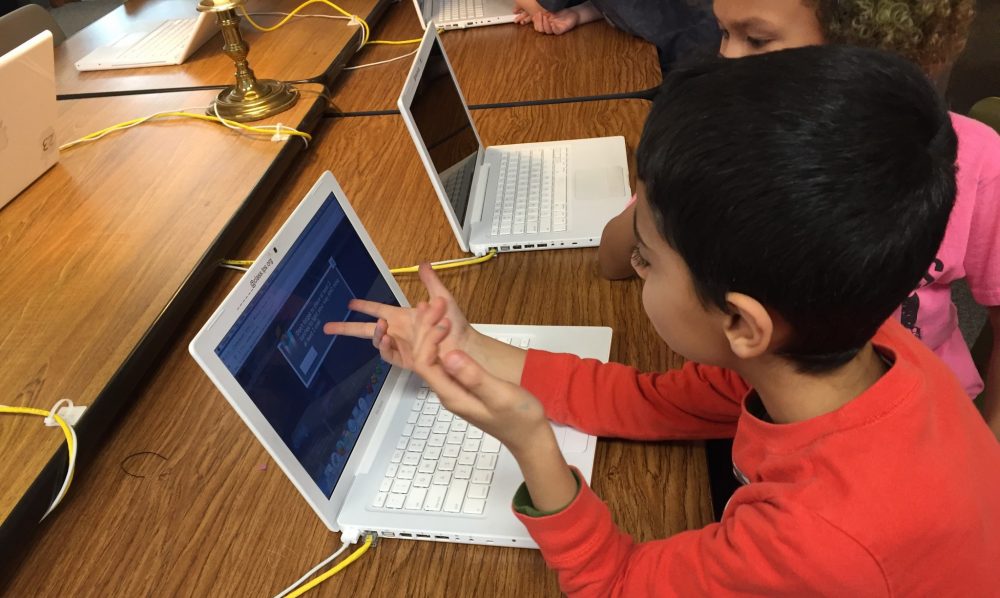Solve cool problems and make cool things!
 Computer Science classrooms are active places that encourage exploration, creativity, collaboration, communication, persistence, and problem solving. We use Code.org CS Fundamentals as the foundation of our students’ experiences, and supplement that with a variety of other resources. We want to spark students’ curiosity about what can be created with various technology tools. We build creative confidence!
Computer Science classrooms are active places that encourage exploration, creativity, collaboration, communication, persistence, and problem solving. We use Code.org CS Fundamentals as the foundation of our students’ experiences, and supplement that with a variety of other resources. We want to spark students’ curiosity about what can be created with various technology tools. We build creative confidence!
Guiding Principles – from Resnick and Siegel
Projects: Provide children with opportunities to work on meaningful projects (not just puzzle-solving activities) so they experience the process of turning an initial idea into a creation that can be shared with others.
Peers: Encourage collaboration and sharing, and help children learn to build on the work of others. Coding shouldn’t be a solitary activity.
Passion: Allow children to work on projects connected to their interests. They’ll work longer and harder — and learn more in the process.
Play: Encourage children to experiment playfully — try new things, take risks, test the boundaries, learn from failures.

“Computer Science is electricity for your brain!” – first grade student
Elementary students learn languages like Blockly and Scratch so they can focus on programming logic more than the exact syntax required by text-based languages. This is the same approach used by introductory university computer sciences classes like Harvard CS50. Students learn how to write programs that involve loops, variables, functions, events, etc. Students are introduced to text-based programming environments as they gain more experience in upper grades. They apply their skills to create projects, stories, games, apps, program robots, and more.
